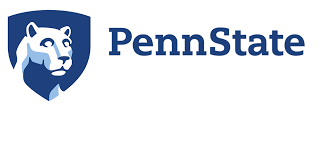Penn State University has just received an eight hundred thousand dollar grant from the U.S. Department of Energy to research new methods for removing rare-earth fission products from molten salt baths which are used to electro-refine and reduce nuclear wastes during the recycling of uranium. The grant will be used to study the efficient recovery of rare-earth elements using liquid metals.
Hojong Kim is an assistant professor of materials science and engineering at Penn State. He will be leading the Penn State research team. Kim said, “The electrorefining process is designed to separate the usable fraction of uranium metal, about 95 percent of the material, from the used nuclear fuel, using a salt bath. However, in this process, rare-earth fission products are dissolved into the salt, accumulate over time, and must be removed to reuse the salt bath and minimize the generation of additional nuclear waste.”
The current techniques for removing rare-earth elements are not very efficient because the rare-earths have multivalent states and high chemical reactivity. Neodymium is the most common rare-earth element. Currently less than half the neodymium fission product can be recovered during the uranium recycling process. The Penn State team has demonstrated that liquid bismuth metal can be used to recover as much as ninety percent of the neodymium fission product. Kim will research the recovery of three common rare-earth elements which are found in spent nuclear fuel. These three rare-earth elements are neodymium, gadolinium and samarium.
The Penn State team is researching a technique that makes use of the strong interactions between these elements and certain liquid metals for easier and more efficient recovery. Kim and his team were able to use this method to recover alkaline-earth fission products which had been consider impractical to remove from a molten salt bath. Kim said, “There is a fundamental problem as to why the recovery efficiency for rare-earth elements is so poor, so we proposed a new hypothesis and approach based on liquid metals to enhance the efficiency. In our preliminary work, we observed great gains in recovery efficiency using our approach.”
The DoE grant is for a three-year project at Penn State dedicated to improving recovery efficiency and control of chemical selectivity to reduce the volume of nuclear waste. It is expected that this research will also contribute to our understanding of the electrochemical and thermodynamic properties of rare-earth elements.
Kim’s research group will focus on the experimental investigation and validation of the thermodynamic properties of rare-earth alloys. Zi-Kui Liu is a distinguished professor of materials science and engineering at Penn State. He and his team will work on high-throughput computational modeling of complex, multi-component alloy systems. It is hoped that this will help accelerate the development of efficient rare-earth recovery methods.
James Willit works at Argonne National Laboratory. He will assess the feasibility of using Kim’s technique in a simulated process environment. Kim’s team will support Willit’s work. Kim said, “I envision that the materials cycle needs to be closed so that the bulk of the used materials are recycled and only a small fraction reaches landfills for minimal impact on our environment. That's what drives my research.”
